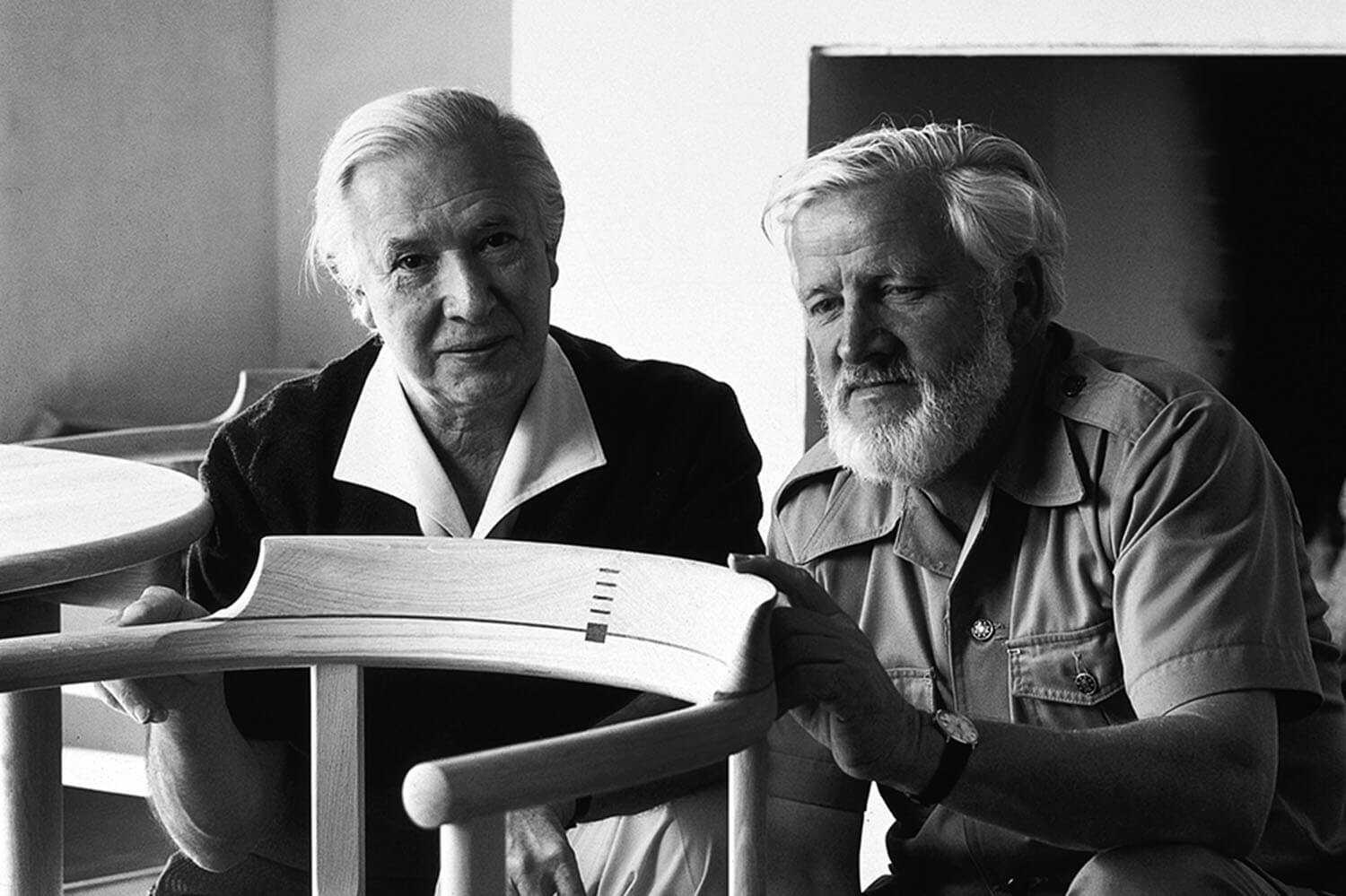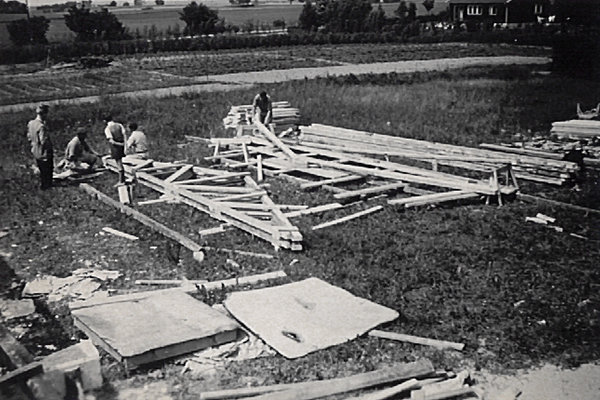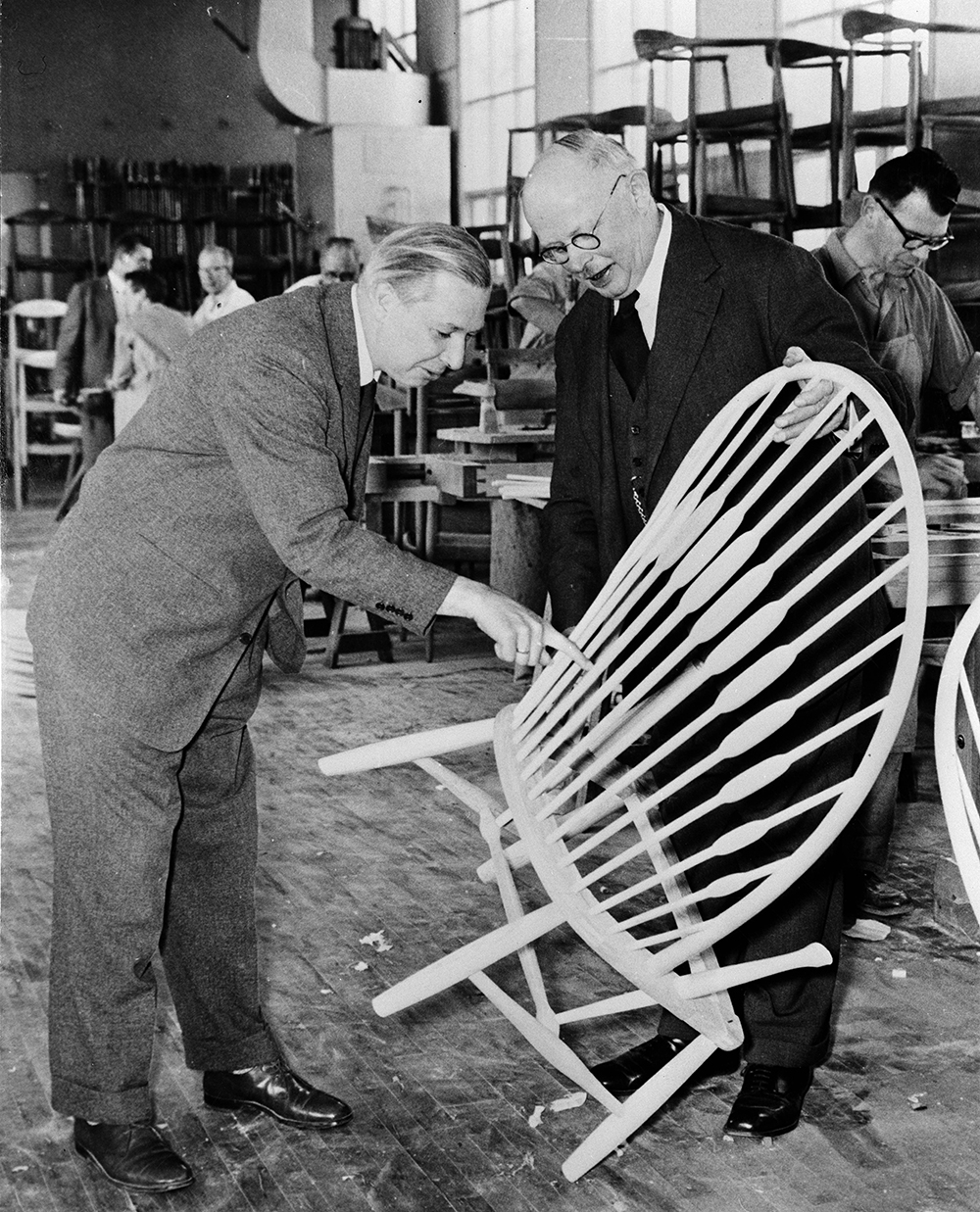

The story of PP Møbler starts in 1953. Two brothers, Ejnar and Lars Peder Pedersen, only recently graduated as carpenters, wishes to set up a workshop of their own. They buy a small plot of land in Allerød and quickly gather eight young and talented cabinet makers.
Thursday the 2nd of April 1953, Ejnar Pedersen takes the first spit, initiating the building of a workshop measuring 150 m2. Today the workshop has grown to the size of 1800 m2, but the company still resides at the same address.
Setting up a workshop is hard work, as Ejnar and Lars Peder discovers. In the daytime, they work on building the workshop and at night they build furniture in a borrowed workshop.
In the beginning, it is especially Ejnars own designs which are being produced.
But in a very short time, orders start coming in for products from other designers.
The first customers are Bovirke (which at the time are selling furniture by Finn Juhl), the furniture shop William Watting, and A.P. Stolen, for whom PP Møbler produce the lower frame for Hans J. Wegners no 19, The Teddy Bear Chair.


As early as 1955, PP Møbler embraced the more experimental sides to cabinet making – and not least the possibilities of wood, which has been characteristic for the workshop ever since. Together with artist, Gunnar Aagaard some highly interesting prototypes are developed. As such, this is the beginning of the extensive developmental work with designers and artists, which has set some remarkable marks in Danish Design history.
In 1956, PP Møbler extends for the first of seven times by adding a 150 m2 machine workshop. The year after, the first journeyman, Ove Metysia, completes his apprenticeship at the workshop, receiving a silver medal for his final project.
By the end of the 1950’s, PP Møbler has established itself in Denmark as a serious and innovative workshop. And in the 1960’s manages to start an actual cooperation with the Danish architect, Hans J. Wegner.
Together they develop the prototype for the Ox-chair, which today is manufactured by Erik Jørgensens Møbelfabrik A/S.
The following years, from 1962 to 1968, the cooperation continues, creating many exciting prototypes, which go into production at other workshops and factories, mainly at Getama and AP Stolen.
After years of successful cooperation throughout the 1960’s, Wegner draws his first chair for PP Møbler, PP 203, which is launched in May 1969.
An important reason for Wegners recognition is PP Møblers uncompromising attitude to quality and materials. One anecdote goes that Wegner was not too concerned about the perfection of the lower frame for The Teddy Bear Chair, since most was to be covered by upholstery. Ejnar responded by stating that the journeymen also needed to find pride in their craft. Besides, the company would not send second-rate craftsmanship on the market.


The Company today has evolved through three generations of master cabinetmakers into one of the world’s most important and highly skilled workshops.
Each day artisans use advanced traditional techniques as well as cutting edge technology to make some of the most exceptionally demanding and yet beautifully resolved furniture ever designed.
Through the passing generations the Company has been nourished with renewed ambition and innovation.
The first generation was a strong team.
Lars Peder Pedersen was a man of the workshop with extraordinary skills. His leadership and enthusiasm created an atmosphere that inspired his craftsmen to achieve the high standards which gained the Company a reputation for outstanding quality.
Ejnar Pedersen was more of a creative thinker with a strong network to architects and designers. His frequent experiments and making of prototypes led to the close friendship and collaboration with Hans J. Wegner that has become the cornerstone of the development of our brand.
From left to right: co-founder Lars Peder Pedersen, Henry Fisker wearing HRH Queen Margrethe II’s medal of honor for 50 years of work at PP Møbler, Ejnar’s son Søren Holst Pedersen and co-founder Ejnar Pedersen.


In 1977 Lars Peder Pedersen retired from the daily management of the Company passing the responsibility for the business to his brother, Ejnar.
In the same year Ejnar’s son, Søren Holst Pedersen joined the company and has since strived to modernize the workshop with state of the art machinery and wood technology to improve the accuracy of our work and elaborate our craft capabilities.
Søren Holst’s son Kasper Hoslt Pedersen became the third generation to join the Company in 2001.
Building on the foundations of previous generations, Kasper has worked to develop the PP brand and to increase sales in order to maintain a healthy growth for the business.
Image: Three generations of Pedersen, Kasper, Søren and Ejnar.
Like the founders, Søren and Kasper are skilled cabinetmakers. Their desire to continue pushing the boundaries of design and crafts is central to the ethos of the Company.
The close relation to Hans J. Wegner and his family has also contributed to the ongoing efforts to establish and maintain the production of Wegner’s fine crafts collection.
Image: From left to right. Søren Holst Pedersen, co-founder Ejnar Pedersen, Hans J. Wegner and daughter and architect Marianne Wegner.
